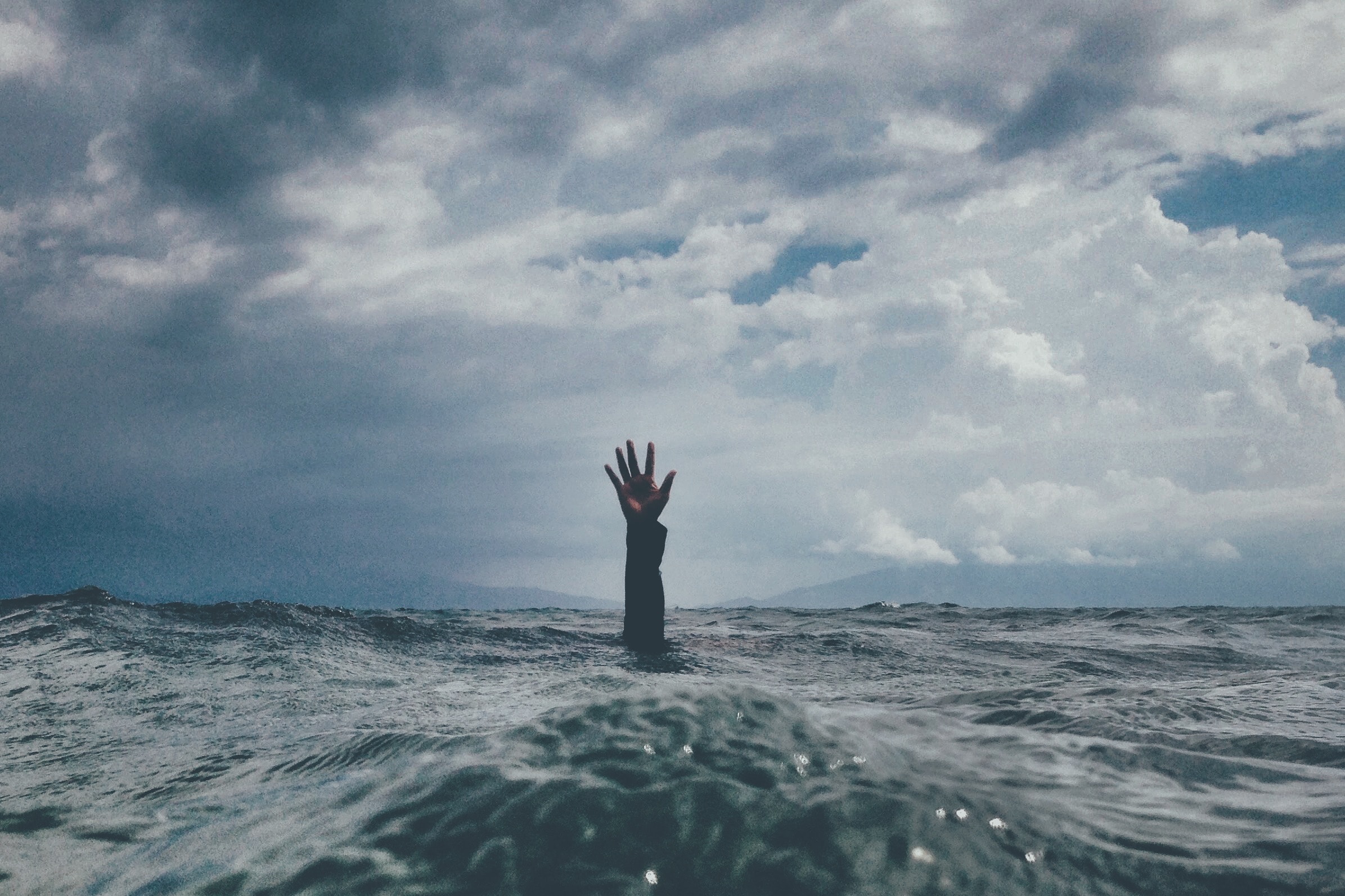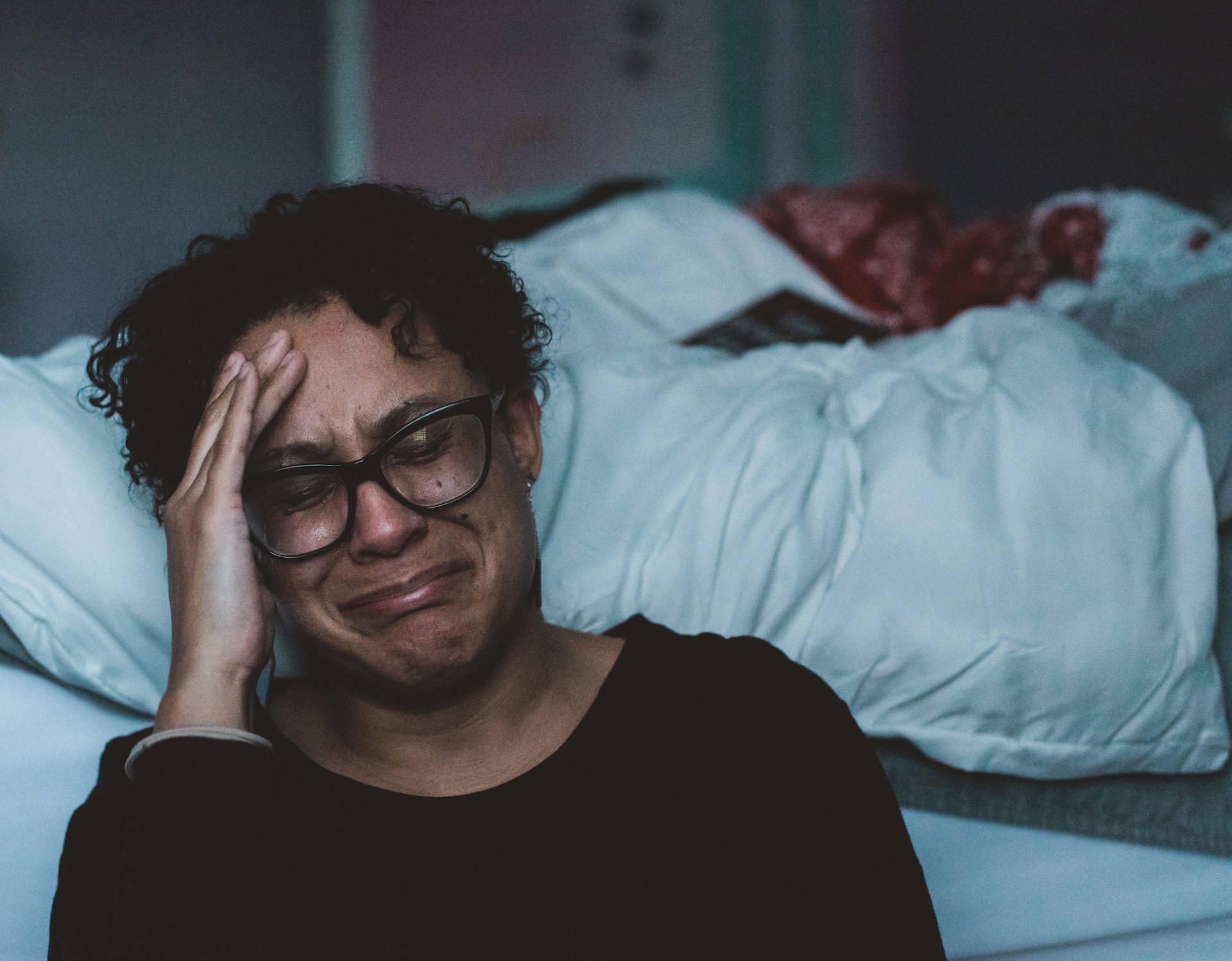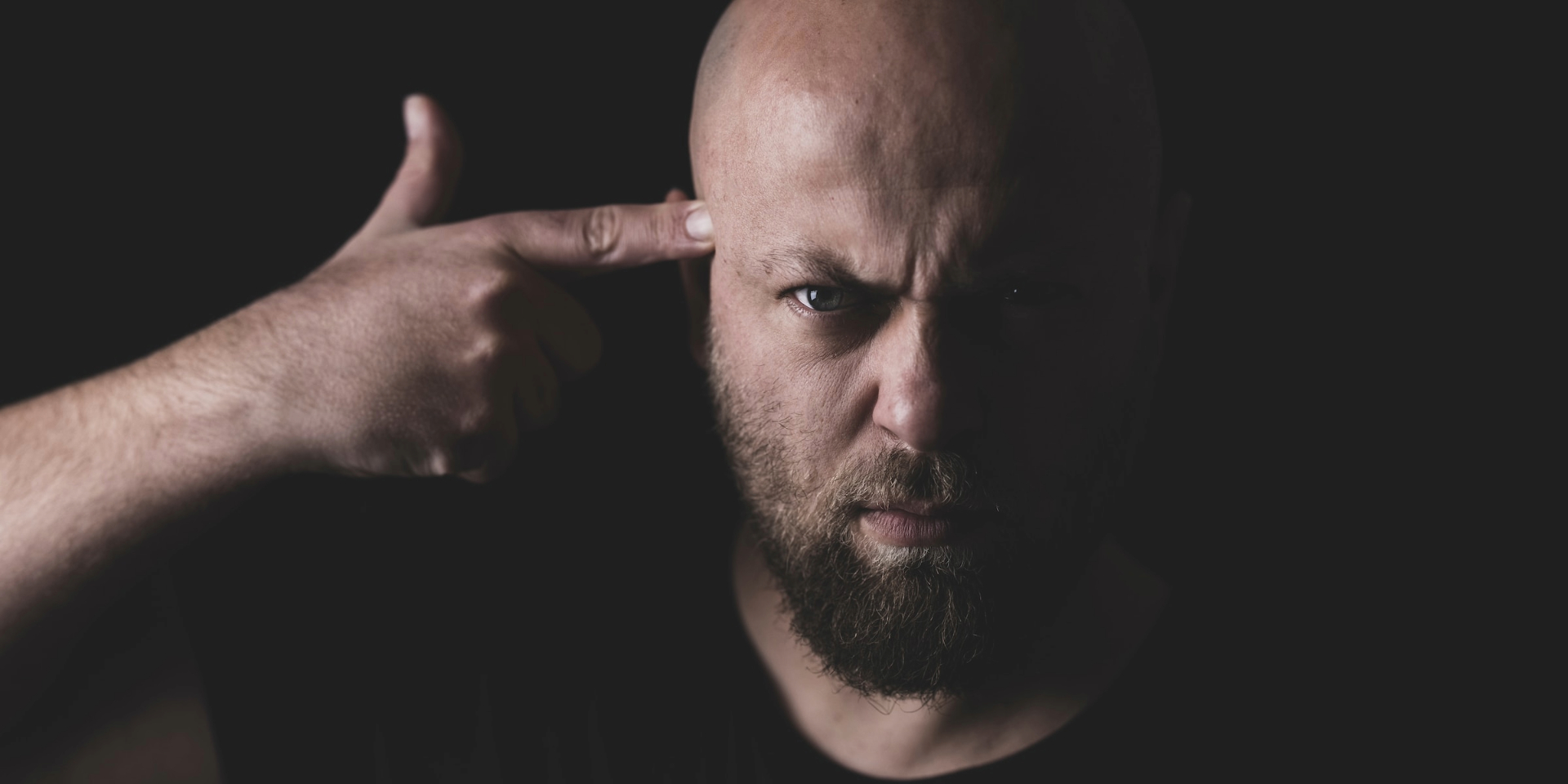“If there is anything more heartbreaking than a body perishing for lack of bread, it is a soul which is dying from hunger for the light.” (Victor Hugo)
It was a warm late summer day when Kevin Hines should have been at college. However, for months the young man had been in the grip of an inner turmoil that was building to an uncontrollable level. He felt like a burden to everyone around him, including his adoptive family, and increasingly compelling voices in his head told him he had no reason to hold on to life.
Diagnosed with bipolar disorder at the age of 17, Kevin did not take his medication regularly and instead took an effective tranquilliser in increasing doses—alcohol.
Two years later, the young man boarded the bus that would take him to the Golden Gate Bridge. One of San Francisco’s tourist attractions, the bridge is also a frequent last resort for suicidal people. Since it opened in May 1937, the Golden Gate Bridge has been the scene of around 1,700 deaths. No one asked Kevin why he was crying, neither on the way nor during the 40 minutes he spent walking across the bridge. Although he was surrounded by hundreds of people, Kevin had never felt more alone.
In an attempt to end the emotional pain he’d been living with for months, Kevin decided to jump into the water. A decision he immediately regretted, however, the second his hands let go of the railing and his body plunged 75 metres into the water.
Within five seconds, the boy was in the water, his spine broken on impact, but with a deep desire to survive. “I remember thinking very clearly, ‘Kevin, you can’t die here, if you die here, no one will ever know that you didn’t want to. No one will ever know that you knew you made a mistake. And I broke the surface.” After his rescue, Kevin began an arduous journey to recovery. He regained his mobility in an amazing way; his physical recovery was better than that of the other very few Golden Gate Bridge survivors. The road to mental recovery proved more circuitous—years of regular hospitalisation, medication and psychotherapy followed.
Today, the life Kevin has reclaimed has a clear purpose—to help those haunted by suicidal thoughts and plans.
Kevin’s message, which I’ll return to later, carries a message of hope. It is all the more powerful because it comes from the experience of someone who knows how precious life is, even as it periodically goes through the twists and turns of hard-to-conquer mental anguish. And hope can be the last lifeline that those besieged by suicidal thoughts can cling to.
No one knows the number of people who have been tempted by the idea of self-inflicted death, whether continuously or occasionally, but judging by the number of suicides recorded in the statistics, the base of the iceberg is much larger than the visible part.
Navigating the numbers of self-inflicted deathsSomeone commits suicide every 40 seconds, and around 800,000 people lose their lives in this way every year, according to the World Health Organisation. Suicide accounts for 1.4% of all deaths worldwide, making it the 18th leading cause of death in 2016 and the second leading cause of death in the 15-29 age group. However, it is estimated that for every adult who succeeds in taking their own life, another 20 people attempt to do the same. Between 1999 and 2016, the number of suicides in the US increased by nearly 30%,[1] according to the Centers for Disease Control and Prevention. According to the American Foundation for Suicide Prevention, an American dies by suicide every 12 minutes. About 45,000 lives were lost to suicide in 2016 (about 15 suicides per 100,000 population), while the number of attempts that do not end in death is much higher—about 1.1 million suicide attempts occur annually. Of the 5.2 million deaths recorded in the European Union in 2015, 56 000 were due to self-inflicted harm. Around 31% of suicides were committed by people in the 45-60 age group, and 8 out of 10 suicides were committed by a man, according to Eurostat data. At EU level, the average suicide rate was 11 deaths per 100 000 inhabitants. With 30 suicides per 100 000 inhabitants, Lithuania had the highest rate, followed by Slovenia (21), Latvia and Hungary (19), Belgium and Croatia (17), and Estonia (16). At the other end of the spectrum, the lowest rates were found in Cyprus (4 suicides per 100 000 inhabitants), Greece (5), Italy (6), the United Kingdom (7), Spain, and Malta (8). While Romania (like Germany) is right around the European average for suicide rates (11), the number of teenage suicides is above average. “In Romania, the frequency of suicide cases among 15-19 year olds is about 50% higher than the European average and 21% higher among Romanian adults aged 50-54,” according to a 2015 publication by the Romanian Association of Psychiatry and Psychotherapy (ARPP) and the Romanian Alliance for Suicide Prevention (ARPS). |

When the wings of life are clipped at the very beginning
If mourning the death of a loved one by suicide is “grief with the volume turned up,” the tragedy takes on extreme proportions when the victim is a child.
Suicides before adolescence are not as common as in other age groups, but they are not as rare as we might imagine, notes Jason Hanna in a CNN article reviewing the statistics. Between 1999 and 2015, a total of 1,309 children between the ages of 5 and 12 took their own lives in the United States—one suicide every five days—according to the Centers for Disease Control and Prevention. The figures seem low (0.31 suicides per 100,000 children aged 5-12) when compared with the 7.04 suicides per 100,000 children aged 13-18, or 17.39 per 100,000, the adult suicide rate. But they are shocking, the article points out, given the very young age of those who, in a moment of confusion, chose death over life.
A study published in 2015[2] reported an increase in the prevalence of suicidal ideation and suicide attempts among American children between 2008 and 2015. The number of children admitted to emergency departments or hospitals for suicidal thoughts or attempts has increased “dramatically,” says Gregory Plemmons, the study’s lead author. The risk of suicide increases with age—in 2016, middle school students were as likely to die from suicide as from a car accident, according to the US Centers for Disease Control and Prevention.
Relationship problems of various kinds are the most common cause of suicide in children, according to a study[3] coordinated by Arielle Sheftall. Analysing data on children (aged 5-12) and adolescents (aged 12-14) who committed suicide in the US between 2003 and 2012, Sheftall and her colleagues found that 60% of children and 46% of adolescents had experienced family or friendship problems in the period leading up to suicide. School problems and other recent crises were present in 30-40% of both age groups. About 30% of the subjects had (diagnosed) mental health problems—attention-deficit/hyperactivity disorder (ADHD) was twice as common in the younger age group, and depression was twice as common as ADHD in the older age group.
Only a third of the children had expressed an intention to commit suicide, which could mean they were either acting on impulse, hiding their plans or didn’t trust anyone to talk about them, Sheftall said.
Children who have suicidal thoughts “do not so much crave the termination of their biological existence as much as desire control, empathy, acceptance, recognition, validation and prompt interpersonal responsiveness of key people in the child’s life,” says Ridge Anderson of Catholic University of America. Seen in this way, suicide is the child’s attempt to deal with a crisis he or she is not equipped to handle, even though he or she may not really want to die.
Given the number of adolescents with depression who don’t seek help, in 2018 the American Academy of Pediatrics recommended comprehensive screening of children up to the age of 12 for possible mental health problems.
“If kids are saying I’m thinking about suicide, or I wish I didn’t exist, or I wish I didn’t wake up—take that seriously,” warns Dr Ruth Gerson, director of the Bellevue Hospital Center Children’s Comprehensive Psychiatric Emergency Program in New York City. When confronted with this shocking information, parents should not express strong emotions to avoid causing their child to hide their intentions and concerns, but should listen to their child and then work with their therapist and paediatrician.
“A lot of parents go to their paediatrician for the scraped knees and sore throats but don’t think of them when it comes to seeking help for emotional and behavioural issues,” says psychiatrist Rachel Zuckerbrot.
Factors that predispose to suicide
Suicide is a complex process, beginning with suicidal ideation, continuing with the planning of the suicidal act, and ending with the attempted or successful suicide, with the individual oscillating between the desire to stay alive and the desire to die. It is difficult to predict with any degree of accuracy whether a person will act on their suicidal thoughts, even when they have made them known.
Relatives of suicide victims sometimes report that the suicide took place shortly after the victim had seen the therapist—in cases where the victim was already undergoing some form of therapy—and that the expert failed to recognise an immediate risk, either because the person concealed their intentions or because the suicidal act was not planned.
Suicide is at the intersection of individual and social factors that may predispose a person to this violent act. Social factors may include poor socio-economic conditions, social pressure, lack of social protection systems, and so on.
Individual factors include physical and especially mental health problems—psychiatric problems, emotional disorders, addictions, or a family history of suicide attempts. Many suicides are associated with alcoholism and other addictions, or with schizophrenia, bipolar disorder and depression, especially its severe forms.
At the same time, suicide correlates with relationship problems, social isolation, major or traumatic personal losses, and economic and occupational difficulties. In times of economic recession, suicide rates in the 25-64 age group increase, studies show. For example, the number of suicides recorded in Greece rose by 17% between 2007 and 2009 and by 40% in the first half of 2011 compared with the same period in the previous year, even though the country had one of the lowest suicide rates in Europe before the economic crisis: 2.8 per 100,000 inhabitants. Similarly, in Ireland, the suicide rate rose by a record 25% between the end of 2006 and 2009 (when the effects of the economic crisis were felt most).
However, risk factors affect the population as a whole, and the number of vulnerable people who are prone to self-destruction is much smaller, which has led experts to try to identify more precisely who is at risk so that better suicide prevention strategies can be developed.

The search for an explanatory model of suicide
“A big problem that has not yet been addressed in practice is that we continue to rely almost entirely on people themselves to proactively tell us if they are suicidal,” says Matthew Nock, professor of psychology at Harvard University, speaking of the challenges of timely prediction of an unpredictable act.
In an attempt to identify people at high risk of suicide, Zachary Kaminsky, a professor at Johns Hopkins University, led a 2014 study that concluded that a single genetic marker called SKA2[4] could predict suicide risk. The researcher found that people who had committed suicide had significantly lower levels of SKA2, and in a subsequent experiment, blood tests from 325 study participants found changes in the gene in people with suicidal thoughts or attempts.
Another study in 2015 by researchers at Indiana University raised hopes that a simple blood test could predict suicide risk. The researchers claim that a test for 11 biomarkers in the blood, combined with a questionnaire, can predict with 90% accuracy which patients being treated for mental disorders will have suicidal thoughts within the next two years.
However, both studies have been challenged by other researchers as simplistic and too small to extrapolate from. Identifying people who plan to kill themselves remains a Gordian knot—especially as other studies have shown that many people who have committed suicide were not diagnosed with a mental disorder.
In 2016, for example, the US Centers for Disease Control and Prevention published a study showing a 25% increase in suicide rates in the US over the previous two decades. Interestingly, however, more than half of those who committed suicide in 2015 were not diagnosed with a mental disorder. Certain crisis situations, including economic hardship and unresolved relationship issues, were most likely to trigger suicide in this group. “We don’t have all the answers,” admits Anne Schuchat, the centre’s director, stressing that the key message to take away from the study is that not just isolated categories, but many people are vulnerable to suicidal thoughts and attempts once a constellation of identified and unidentified factors are present.
Psychologist Thomas Joiner, an expert in the psychology of suicide attempts, has attempted to outline an explanatory model of suicide that covers the area of suicidal motivation well enough to be used for predictive purposes. Joiner, known to the general public through his books Why Do People Die By Suicide? and Myths About Suicide, identifies three causal aspects present in suicide. First, the person feels that he or she is a burden to others, a feeling that is doubled by the second factor, the feeling of deep loneliness, of isolation. These are necessary but not sufficient conditions for suicide, unless the third factor, courage, is added. As long as a person is afraid of death, of the actions and consequences of the act, suicide is unlikely. Joiner points out that there is an increased incidence of suicide among professionals who deal with death and violence on a daily basis and become desensitised to these realities, such as doctors or the military.
There are clear warning signs of impending suicide, says the expert, but they are often ignored by those around and only correctly assessed in retrospect—the most common are expressions of a death wish, sleeplessness combined with agitation, dramatic mood swings or the giving away of possessions.
Joiner’s model is very useful for researching this sensitive topic, says researcher Pauline Boss, because it emphasises that at the heart of the will to live is the need to know that we belong and that our presence is useful and valuable to others.
A failed attempt is a vote for the future
A first category of preventive measures, considered to be among the most effective in reducing risk in the general population, concerns restricting access to lethal means.
The effectiveness of these measures lies in the fact that they interfere with the last two stages of the suicide process, making it more difficult to carry out and giving the person a moment of respite in which to reassess their decision.[5]
Suicide rates can be reduced by strictly controlling access to lethal means, such as firearms. Studies have shown that gun control laws in Canada (1977) or Austria (1997) have significantly reduced the number of suicides by firearms, as well as suicide in general among the population.[6]
San Francisco authorities have decided to fund the installation of a steel net under the Golden Gate Bridge. This measure represents a victory for the campaign waged for decades by the families of the victims and was adopted after endless delays for aesthetic and financial reasons. One of the opponents’ arguments was that people who wanted to take their own lives would do so anyway, seeking a more accessible method once the net was in place.
Harvard University studies contradict this argument, showing that 9 out of 10 people who are prevented from committing suicide do not attempt it again. In 1978, Richard Seiden, a professor at the University of California, studied the cases of 515 people who were prevented from jumping off the Golden Gate Bridge between 1937 and 1971. His research came to the same reassuring conclusions—although a history of attempted suicide is a major risk factor, more than 90% of those prevented from taking their own lives were either still alive or had died of natural causes.

When zero suicides can be more than a utopian goal
Suicide is an enemy that can be defeated, says psychologist Thomas Joiner, whose interest in the subject is also linked to a personal tragedy: his father committed suicide.
But the fight against this enemy requires many weapons—and a huge safety net that includes the families of those at risk, the community, the school, medical institutions, the police, and the media. An essential part of this effort to save those who can no longer save themselves comes from the circle of “survivors”—in the literature the term refers to those who have been rescued after a suicide attempt, but also to people who have experienced the trauma of losing a loved one to suicide.
Steve, a counsellor who lost his son to suicide, is preparing to set up a Zero Suicide organisation based on a proactive strategy to identify and support vulnerable people before they reach a moment of crisis. “Even if you believe we are never going to eradicate suicide, we must strive towards that. If zero isn’t the right target, then what is?” argues Steve.
Society can do more for those struggling with the thought of death if it drops the stigma it places on them and overcomes its fatalistic beliefs, such as “you can’t stop someone who’s fully intent on killing themselves,” says David Covington, president of the American Association of Suicidology. His optimism is backed up by hard data—Magellan Health Services, a health care company in Arizona that has implemented the Zero Suicide strategy, has seen a 50% drop in suicide rates over the past 10 years.
The success of a strategy aimed at vulnerable people lies in nurturing the will to live, however tenuous, experienced by many of those who have been saved from a death they almost brought upon themselves.
Allen Bachman, a 46-year-old lawyer, describes the difference a suicide attempt can make in a person’s life—it’s like opening a door that never quite closes, so that in a crisis the mind begins to think that there is a sure way out, death. A message to be ignored, says Bachman, who adds: “All the best times of my life came after me thinking I wanted to kill myself.”
Ken Baldwin, one of the survivors of the Golden Gate Bridge jump, talks about his epiphany in the 4-5 seconds before impact: “I instantly realised that everything in my life that I’d thought was unfixable was totally fixable—except for having just jumped.”
Recalling the moments he jumped from the bridge and the intense regret he immediately felt, Kevin Hines says that 19 of the 25-26 survivors who risked their lives on the bridge admitted they were overcome with regret just when it was too late to back out. In fact, as an author and motivational speaker, Hines has dedicated his life to spreading a message of hope to those who are considering death as well as those around them. Although he still struggles with psychosis and depression, Hines has vowed not to harm himself again and to seek help when he feels the pressure of negative thoughts mounting.
“I want to help people understand that their thoughts don’t have to lead to an attempt, that their thoughts don’t have to become their actions when they are suicidal. I wish I knew that the day I stood on the bridge ready to die. I wish I knew that just because I thought it, it didn’t mean I had to act upon it,” says Kevin. Every problem has a solution, he insists, and his comments are backed up by the diagnosis he is battling. It’s worth fighting “to be here tomorrow” is the leitmotif of the message of hope and recovery that he spreads.
On the other hand, precisely because suicide is associated with feelings of abandonment (“nobody cares about me”), Kevin believes that empathy and support from others can sometimes make the difference between life and death. On the morning he walked across town to the bridge, he had made a pact with himself—one that other survivors tell of—that he would give up his plans and ask for help if he received a single sign of compassion. Although he cried all the way on the bus and for the 40 minutes he walked across the bridge, no one said a word to him except a tourist who asked him to take a picture. Kevin admits that he cannot understand the logic of this indifference that has stained the fabric of humanity and confesses that it still saddens him that people can see someone crying in pain and do nothing.
There is a remedy for the burdens we all carry, says artist and writer Dese’Rae Stage, who attempted suicide 18 years ago. A world in which dark thoughts could be confessed without risk of stigma would be a world in which people would not choose to leave life through the back door, believes Stage, who proposes a simple cure for modern human alienation: “Be good to each other.”
A society that followed this advice, which has ancient roots, would not need decades to decide whether it was worth investing tens of millions of dollars in a safety net that would protect hundreds of human lives. Instead, it has an organic need for people willing to keep their windows lit for those who, having exhausted their fuel of hope, can no longer remember the way home and towards the light.
Carmen Lăiu is an editor of Signs of the Times Romania and ST Network.




















